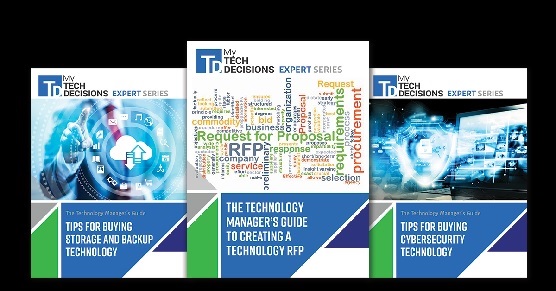Have you ever wondered what the differences are between CFL lighting and LED lighting?
Unless you’re in the coal mining business, odds are you and your employees aren’t going to be working in the dark, which means lighting is probably one of your biggest areas of energy consumption in your office, warehouse or production facility.
In recent years, however, advancements in energy-efficient lighting options have made it possible to significantly reduce the amount of energy required to light spaces, and it may be as simple as replacing the light bulbs.
For more than a century, the type of incandescent light bulb popularized by Thomas Edison was the most popular form of illumination, but within the last 20 years the compact fluorescent light (CFL) and the light-emitting diode (LED) have supplanted the traditional light bulb.
Both types of bulbs offer greater energy efficiency, but each has its distinct advantages and disadvantages.
If you are considering switching your commercial building to a more energy-efficient source of light, consider the differences between CFL lighting and LED lighting.
Although both can offer you energy savings of up to 80 percent and they can last up to 25 times longer than incandescent bulbs, they are not the same.
Depending on your circumstances and needs, you may see greater benefits by choosing one type of bulb over the other, or even by utilizing a combination of the two.
Switching To CFL Lighting
Made from fluorescent bulbs that are folded or twisted into base, CFL lighting offers many distinct advantages over other types of illumination.
For one, they can fit into standard light sockets without adaptors, and they are relatively inexpensive compared to LED lighting.
They are omnidirectional, which makes them good for use as table lamps and other applications where light needs to be projected a full 360 degrees. This makes CFLs a good choice to light large open areas, such as warehouses or production facilities.
However, despite these many advantages, CFL lighting also comes with a number of disadvantages that should make commercial property owners think twice about switching their buildings to CFL lighting completely.
One of the most important issues, from a liability standpoint, is that CFLs contain toxic mercury vapor, making their disposal a highly sensitive issue. Many states have stringent requirements for disposing CFL bulbs, but there are many organizations that offer free CFL recycling services.
They also are relatively fragile, therefore, broken CFLs require specific handling and disposal methods due to the mercury vapor.
In addition to the environmental concerns related to CFL lighting, they are highly susceptible to premature aging if they are switched on and off frequently.
They also produce a significant amount of heat, with nearly 80 percent of their energy being released as heat.
Switching To LED Lighting
In the past, LED technology was limited to producing blue or red light.
Within the last decade, advancements in LED lighting technology have made it possible to produce white LED light.
As a result, it is now possible for LEDs to replace incandescent or CFL bulbs in most applications.
The primary advantages of using LEDs are their durability, versatility and lifespan.
As solid-state technology, LED lights are difficult to damage by bumping or jarring them, and a new LED can last up to 100,000 hours compared to the 10,000-hour lifespan of a typical CFL bulb.
Although LED lighting is typically more expensive initially than CFL lighting, the costs related to maintenance and replacement are much lower overall.
The high initial cost of LED lighting is one of the technology’s primary disadvantages, but they also have other drawbacks that may make them a less-appealing choice for commercial applications.
Unlike CFLs, LEDs are directional, meaning they project light in one direction unless they are diffused somehow. This makes them suitable for overhead lighting but less effective in other applications.
LED lighting is also highly sensitive to excessive heat, meaning placing them close to equipment or components that give off a lot of heat may affect their performance.
Although CFLs and LEDs offer substantial energy savings over incandescent lights, determining what works best for your commercial building depends heavily on the specific needs and circumstances of the applications.
No matter what type of lighting you choose, you’re sure to see the benefits of lower energy bills and a lower environmental footprint for your building and your business.
Loranne May serves as Marketing Specialist at Connelly Electric. Loranne plays a key role in promoting Connelly’s brand, services, capabilities, and qualifications as a well-known and well-respected electrical contractor in the industry.
If you enjoyed this article and want to receive more valuable industry content like this, click here to sign up for our digital newsletters!










This is a good coverage of the basics, but I would suggest a few points of clarification for your readers:
* I don’t think it’s accurate to suggest (as any kind of likelihood) that CFLs and LEDs can provide you with equal energy savings and longevity. CFLs of equal wattage will probably never produce the same amount of light as an LED these days, and CFLs aren’t likely to last 25 times longer than an incandescent.
* CFLs are pretty awful in the cold, while LEDs handle the cold well.
* While it’s true that LEDs are directional, their diodes can be placed to create more or less omni-directional lighting. And then you have options like multi-beam LEDs, where the diode panels can be set at different beam angles for even more flexibility to suit specific needs.
Outside of initial cost, there is almost no reason to go with CFLs anymore, which is why manufacturers are starting to wind down their production. In some instances, there isn’t yet an LED replacement for certain CFLs (or it’s very expensive at the moment), but these instances are becoming quite rare.